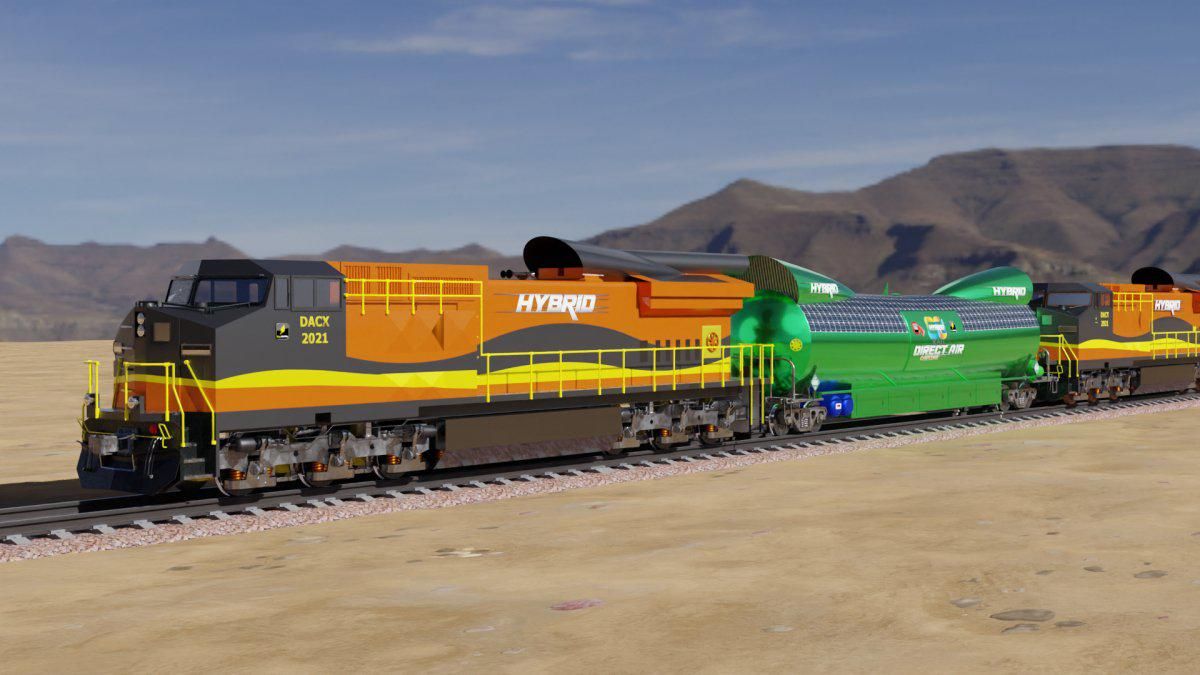Removing carbon dioxide directly from the air can be expensive, and it requires setups with large land and energy footprints. Now, researchers propose a portable, practical solution that relies on retrofitted train cars that capture and store carbon dioxide as they shuttle around on their normal routes.
The concept, outlined in a paper published in the journal Joule, could capture carbon dioxide for less than US $50 a metric ton. By comparison, the cost of direct air capture (DAC) systems today ranges from $250 to $600 depending on the technology used, energy choice, and scale, according to the World Resources Institute.
About 20 DAC projects are in operation around the world at present. Most use large fans to pass air over solid or liquid materials that adsorb carbon dioxide. The materials themselves are expensive, and they have to be heated to release the carbon dioxide; Unhelpfully, the heat usually comes from burning fossil fuels.
The new rail-based DAC idea eliminates most of that energy cost by putting the entire capture system on a train car. Large vents in the retrofitted train cars would allow air to blow over a sorbent material filled in a chamber, eliminating the need for energy-intensive fan systems.
The energy for the DAC would come from the train’s braking system. “Every train in the world has a dynamic braking system that is used during every stop or deceleration,” Eric Bachman, founder of startup CO2Rail, who led the study along with Geoffrey Ozin, a chemistry professor at the University of Toronto. “For the last seven decades, the energy that is generated during braking is sent up to a resistor grid, converted to heat and blown off the top of the locomotive. It’s an enormous amount of energy being wasted, and that’s always bothered me.”
Instead, trains could be equipped with regenerative braking systems like the ones found in electric vehicles, which convert the kinetic energy from braking into electrical energy that is stored in a battery. That battery would then power an electro-swing DAC system. This technology, being developed by companies such as Verdox, uses an electrochemical cell to trap carbon dioxide on a capture medium while charging, and then release it when discharging.
Once the material soaks up enough carbon dioxide, the chamber would be sealed and a compressor would collect and cool the gas, turning it into a liquid for storage. Once a day, during crew-change or fueling stops, the liquefied carbon dioxide could be transferred to a tank car, which when full could then be transported along with other full tank cars to a sequestration site for storage or for industrial use.
Besides minimizing energy costs, rail-based DAC also minimizes other expenses compared with land-based DAC. “We have no additional maintenance,” Bachman says. “We also don’t have land cost, zoning costs, and environmental study costs.”
Plus, there is no need for brand new infrastructure. Bachman’s idea is to attach CO2Rail cars to existing passenger or freight trains. “Trains are already going from point A to point B for normal service and they would be doing that even without the DAC system,” he says.
The researchers estimate that an average freight train could remove about 6,000 metric tons of carbon dioxide every year. CO2Rail is now in talks with a funding partner, and if things go well, it plans to start building its DAC train car in early 2023.
The technology and economics of rail-based DAC are sound, says Ozin, and the idea is capturing attention from investors and the industry. “People want to get on board,” he says. “My mantra now is ‘ride the train, save the world.’ ”
- What To Do With Captured CO2 - IEEE Spectrum ›
- New Tech Could Turn Algae Into the Climate's Slimy Savior - IEEE ... ›
- Fuel Cells Finally Find a Killer App: Carbon Capture - IEEE Spectrum ›
- Using The Oceans To Help Capture Carbon - IEEE Spectrum ›
- MIT Turns Captured Carbon Into Fuel–Efficiently - IEEE Spectrum ›
Prachi Patel is a freelance journalist based in Pittsburgh. She writes about energy, biotechnology, materials science, nanotechnology, and computing.



